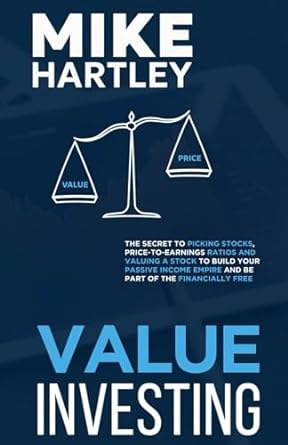Question
A. Parker Products manufactures a variety of household products. The company is considering introducing a new detergent. The company's CFO has collected the following information
A. Parker Products manufactures a variety of household products. The company is considering introducing a new detergent. The company's CFO has collected the following information about the proposed product. (Note: You may or may not need to use all of this information, use only the information that is relevant.)
| The project has an anticipated economic life of 4 years. | |
| The company will have to purchase a new machine to produce the detergent. The machine has an up-front cost (t = 0) of $2 million. The machine will be depreciated on a straight-line basis over 4 years (that is, the company's depreciation expense will be $500,000 in each of the first four years (t = 1, 2, 3, and 4). The company anticipates that the machine will last for four years, and that after four years, its salvage value will equal zero. | |
| If the company goes ahead with the proposed product, it will have an effect on the company's net operating working capital. At the outset, t = 0, inventory will increase by $440,000 and accounts payable will increase by $140,000. At t = 4, the net operating working capital will be recovered after the project is completed. | |
| The detergent is expected to generate sales revenue of $2 million the first year (t = 1), $3 million the second year (t = 2), $4 million the third year (t = 3), and $4 million the final year (t = 4). Each year the operating costs (not including depreciation) are expected to equal 60 percent of sales revenue. | |
| The company's interest expense each year will be $400,000. | |
| The new detergent is expected to reduce the after-tax cash flows of the company's existing products by $200,000 a year (t = 1, 2, 3, and 4). | |
| The company's overall WACC is 10 percent. However, the proposed project is riskier than the average project for Parker; the project's WACC is estimated to be 12 percent. | |
| The company's tax rate is 40 percent. | |
Estimate the project net cash flows. Make sure to put the cash flows in order: CF0 in box 1, CF1 in Box 2, CF2 in Box 3, etc. Round it to a whole dollar, and do not include the $ sign. In box 6 (last one), compute the project's NPV. Round it to a whole dollar, and do not include the $ sign.
Question 10 Answers 1-6
| Blank # 1 | |
| Blank # 2 | |
| Blank # 3 | |
| Blank # 4 | |
| Blank # 5 | |
| Blank # 6 |
Mars Inc. is considering the purchase of a new machine that costs $60,000. This machine will reduce manufacturing costs by $5,000 annually. Mars will use the MACRS accelerated method (shown below) to depreciate the machine, and it expects to sell the machine at the end of its 5-year life for $10,000. The firm expects to be able to reduce net operating working capital by $15,000 when the machine is installed, but the net working capital will return to the original level when the project is over (i.e., after 5 years). Mars's marginal tax rate is 40 percent, and it uses a 12 percent cost of capital to evaluate projects of this nature. Calculate the net cash flows of the project. Be sure to put the cash flows in the order, i.e., CF0 in box 1, CF1 in box 2, CF2 in box 3, etc. Cash outflows should be negative numbers, e.g., -23,500.
| Year | MACRS Percentage |
| 1 | 0.20 |
| 2 | 0.32 |
| 3 | 0.19 |
| 4 | 0.12 |
| 5 | 0.11 |
| 6 | 0.06 |
Question 11 options:
| Blank # 1 | |
| Blank # 2 | |
| Blank # 3 | |
| Blank # 4 | |
| Blank # 5 | |
| Blank # 6 |
Step by Step Solution
There are 3 Steps involved in it
Step: 1

Get Instant Access to Expert-Tailored Solutions
See step-by-step solutions with expert insights and AI powered tools for academic success
Step: 2

Step: 3

Ace Your Homework with AI
Get the answers you need in no time with our AI-driven, step-by-step assistance
Get Started


